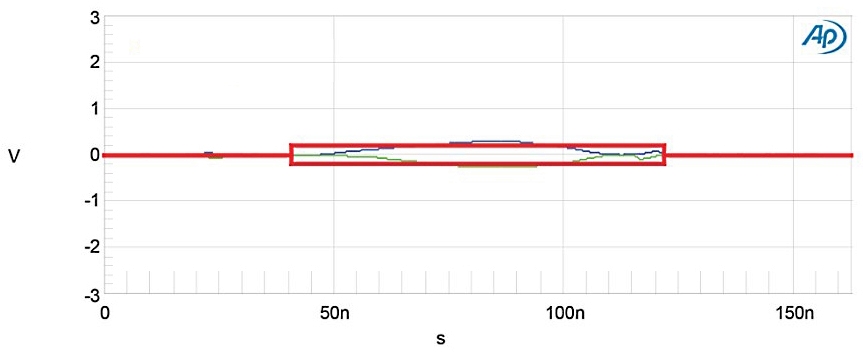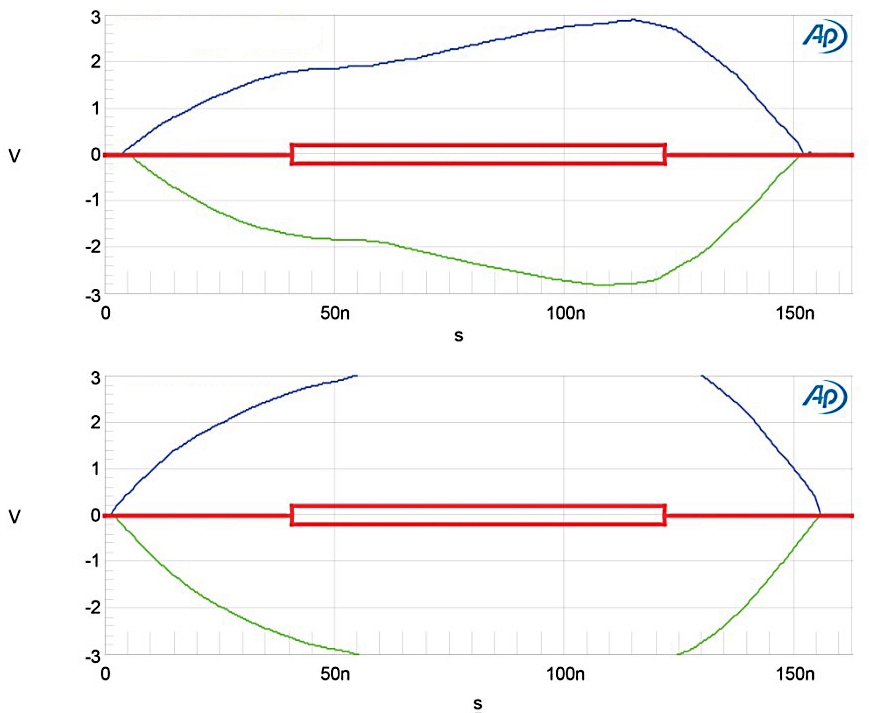
How Long?
There is no “hard limit” on how long a cable can be, either for analog or digital audio. It would be safe to say that 1,000 feet is stretching it for either one. But I can guarantee you that the analog signal will still work at that distance, albeit with some possible audible high frequency loss.
At that length the digital signal is less likely to contain information that can be restored to a contiguous waveform. That’s not an advocation for analog over digital, because you shouldn’t try to run either 1,000 feet, but I’ll take “muddy audio” over “no audio” any day.
The take-away is that for short distances, you can usually get away with murder regarding cabling. At less than 100 feet (30 meters) I wouldn’t be terribly concerned about the cable capacitance corrupting either signal type, but any losses are likely of more consequence for the analog signal.
As the soft “100 meter limit” for professional digital audio is approached, the cable’s properties becomes a more significant factor, and cables designed specifically for digital audio can improve the integrity of the interface. That same cable may mitigate some high frequency loss in an analog interface. Basically, for short distances nothing matters, and for long distances everything starts to matter.
Particular Factors
Digital-grade pro audio cable is low capacitance STP that is designed to exhibit a specific impedance in the radio frequency range that it is designed for. This is typically 110 ohms – the same value as the input and output impedances in the interface. The impedance match mitigates reflections between source and load that could corrupt the data. The importance of maintaining this impedance match increases with cable length, and matters more as you approach the recommended distance limits for the digital format.
Digital audio, when used within its recommended working distance, is very immune to “cable effects” and buying a more expensive cable is not going to result in better sound. Ironically, category cable (e.g., Cat-5 and Cat-6) has very low capacitance and a 100-ohm impedance, and makes an excellent cable for AES3 digital audio (Figure 6).

While low-cost Cat-5 might offer a similar level of performance to a digital-grade STP cable, it could be a practical nightmare with regard to wiring, coiling, and transport.
But for fixed installations it’s a low cost, convenient way to transport digital signals, and also works well for balanced analog interfaces.
One of the reasons for the transition to digital audio is to take the cable out of the equation with regard to signal transport.
While it doesn’t fully deliver on that, the binary “all or nothing” nature of digital audio means that the effects of losses are no longer shades of gray, with some cables sounding “warmer” or “cleaner” than others. This means that the cable doesn’t matter at all until it matters a lot, and you will know it when it happens.
Meanwhile, shielded-twisted pair digital-grade cable is designed to have improved symmetry between the twisted-pair and shield, allowing the balanced input and output to better do their jobs. It’s not exorbitantly expensive and becomes increasingly beneficial as the cable length approaches the 100-meter limit. Since a good braided shield digital cable is similar in price to a good braided shield analog cable, I use digital cable for both analog and digital interfaces in portable systems.
Digital-grade STP cable is available with a foil shield at about half the price of braided shield digital-grade STP, but at a much higher cost than analog foil shield STP. Cheap, foil-shield STP has been the mainstay of installed sound for decades and it works fine for analog interfaces and even for digital interfaces at short lengths. Because foil STP is cheap, it’s not going away, which presents a problem for large rooms with analog systems that are retrofitted with digital systems, making it advisable to replace the wiring along with the analog gear (Figure 7).

Here are the take-aways on this topic:
— Balanced interfaces are preferred for both analog and digital signals.
— This distance limit is a gradient for analog signal degradation, and more of a drop-off for digital signal degradation.
— While cables themselves are not “digital,” a cable becomes digital-grade when it is designed to have very high symmetry, low capacitance, and a specific RF impedance.
— For long cable runs, digital-grade STP is preferred because it has better symmetry, lower capacitance, and is similar in price to a good analog cable.
— Foil STP abounds in the marketplace and in both portable and fixed install analog systems. High capacitance makes it unsuitable for digital audio in long cable runs.
A big part of being an audio practitioner is knowing what matters and when. It’s always good practice to design sound systems with the shortest possible cable runs for both analog and digital interfaces. But as the limits are approached, the investment in digital-grade braided or foil STP becomes increasingly justified.
